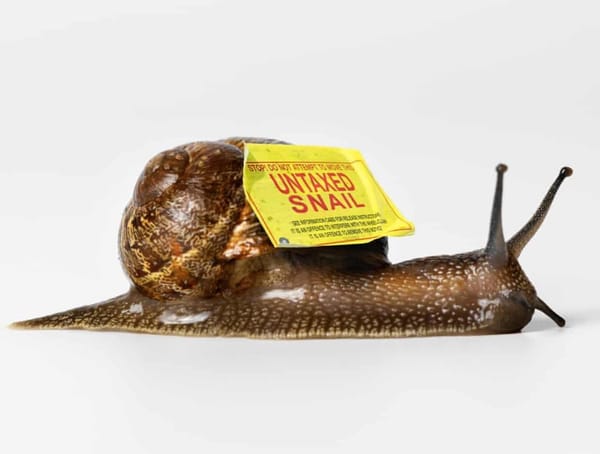Did Meriwether Clark commit suicide or was he murdered?

From Scientific American: "Captain Meriwether Lewis — William Clark’s expedition partner on the Corps of Discovery’s historic trek to the Pacific, Thomas Jefferson’s confidante, governor of the Upper Louisiana Territory and all-around American hero — was only 35 when he died of gunshot wounds sustained along a perilous Tennessee trail called Natchez Trace. A broken column, symbol of a life cut short, marks his grave. But exactly what transpired at a remote inn 200 years ago this Saturday? Most historians agree that he committed suicide; others are convinced he was murdered. Even now, precious little is known about the events of October 10, 1809, after Lewis – armed with several pistols, a rifle and a tomahawk – stopped at a log cabin lodging house known as Grinder’s Stand. He and Clark had finished their expedition three years earlier."
This town in Manitoba is the only place that has a prison for polar bears

From Now I Know: "Churchill is home to about 800 to 1,000 people, and, for about six to eight weeks in the late fall, also to a similar number of polar bears. Including the handful that are locked up in Churchill's polar bear prison. Polar bears subsist on a high-fat, high-protein diet consisting mainly of ringed seals. Each year, hundreds of polar bears make their way to the Churchill area in search of food – the Bay is home to many ringed seals – and when seals are hard to find, the bears go searching for food elsewhere. Often, this means there’s a polar bear or two walking around town. In response, Manitoba has a group of “conservation officers” who are charged with keeping bears (not people) in check and, similarly, to protect the bear population. Call 675-BEAR and the six officers (or some subset of them) will be on-scene as soon as possible."
The Great Molasses Flood of 1919 covered six city blocks and killed 21 people

From Damn Interesting: "On 15 January 1919 the ground near 529 Commercial Street in Boston, Massachusetts began to tremble. At the nearby Purity Distilling Company, a six-story-tall iron molasses tank grumbled like a massive stomach with severe indigestion. This enormous cache of sweet molasses was awaiting transfer to a Purity processing plant, where it would then be used in the production of sweetener, drinking-liquor, and alcohol-based munitions. Moments after the first distressed groan, a sound reminiscent of machine-gun fire echoed in the streets. It was the massive tank’s iron rivets buckling in quick succession. Just as bystanders began to identify the source of the alarming noises, the tank burst in a terrific explosion, throwing massive, ragged chunks of sheet-iron into the surrounding neighborhood. The blast flattened the offices of the Purity Distilling Company, and a flying section of iron crushed a nearby fire station."
Hi everyone! Mathew Ingram here. I am able to continue writing this newsletter in part because of your financial help and support, which you can do either through my Patreon or by upgrading your subscription to a monthly contribution. I enjoy gathering all of these links and sharing them with you, but it does take time, and your support makes it possible for me to do that. I also write a weekly newsletter of technology analysis called The Torment Nexus.
How China's road-tripping auntie became an unlikely feminist icon

From the BBC: "Sixty-year-old Chinese grandmother Su Min had no intention of becoming a feminist icon. She was only trying to escape her abusive husband when she hit the road in 2020 in her white Volkswagen hatchback with a rooftop tent and her pension. "I felt like I could finally catch my breath," she says, recalling the moment she drove away from her old life. "I felt like I could survive and find a way of life that I wanted." Over the next four years and 180,000 miles, the video diaries she shared of her adventures, while detailing decades of pain, earned her millions of cheerleaders online. They called her the "road-tripping auntie" as she inadvertently turned into a hero for women who felt trapped in their own lives. Her story is now a hit film that was released in September and she made it to the BBC's list of 100 inspiring and influential women of 2024."
That time the US tried to make it rain by shooting explosives into the sky

From Amusing Planet: "Edward Powers, a former Civil War general, proposed a less destructive approach to inducing rain. In 1871, he published War and the Weather, in which he observed that heavy rainfall often followed battles involving intense artillery fire—an observation shared by many of his time. Powers found support from the U.S. Army Signal Office weather service and, through his representative Charles Farewell, proposed an ambitious plan: firing 300 cannons arranged in a mile-wide circle to induce rainfall. However, Congress showed little interest in the idea. It took twenty years before Farewell successfully secured a $9,000 congressional appropriation for rainmaking experiments. The project was overseen by Secretary of Agriculture Jeremiah Rusk, who appointed Robert G. Dyrenforth—a patent lawyer with a degree in mechanical engineering—as the lead investigator. Dyrenforth and his team of pyrotechnicians began their experiments by launching a 10-foot explosive-filled balloon."
An archaeologist plays a 7,000-year-old musical instrument made of rocks
A 7000 year old instrument Has been discovered.
— Brian Roemmele (@BrianRoemmele) January 12, 2025
The ancient Rock Band…
Archeologist and doctor of prehistoric music Jean-Loup Ringot captured while playing the lithophone, a unique instrument of rocks and pieces of rock capable of producing musical notes from the vibration… pic.twitter.com/RGb4jp903A
Acknowledgements: I find a lot of these links myself, but I also get some from other newsletters that I rely on as "serendipity engines," such as The Morning News from Rosecrans Baldwin and Andrew Womack, Jodi Ettenberg's Curious About Everything, Dan Lewis's Now I Know, Robert Cottrell and Caroline Crampton's The Browser, Clive Thompson's Linkfest, Noah Brier and Colin Nagy's Why Is This Interesting, Maria Popova's The Marginalian, Sheehan Quirke AKA The Cultural Tutor, the Smithsonian magazine, and JSTOR Daily. If you come across something interesting that you think should be included here, please feel free to email me at mathew @ mathewingram dot com



